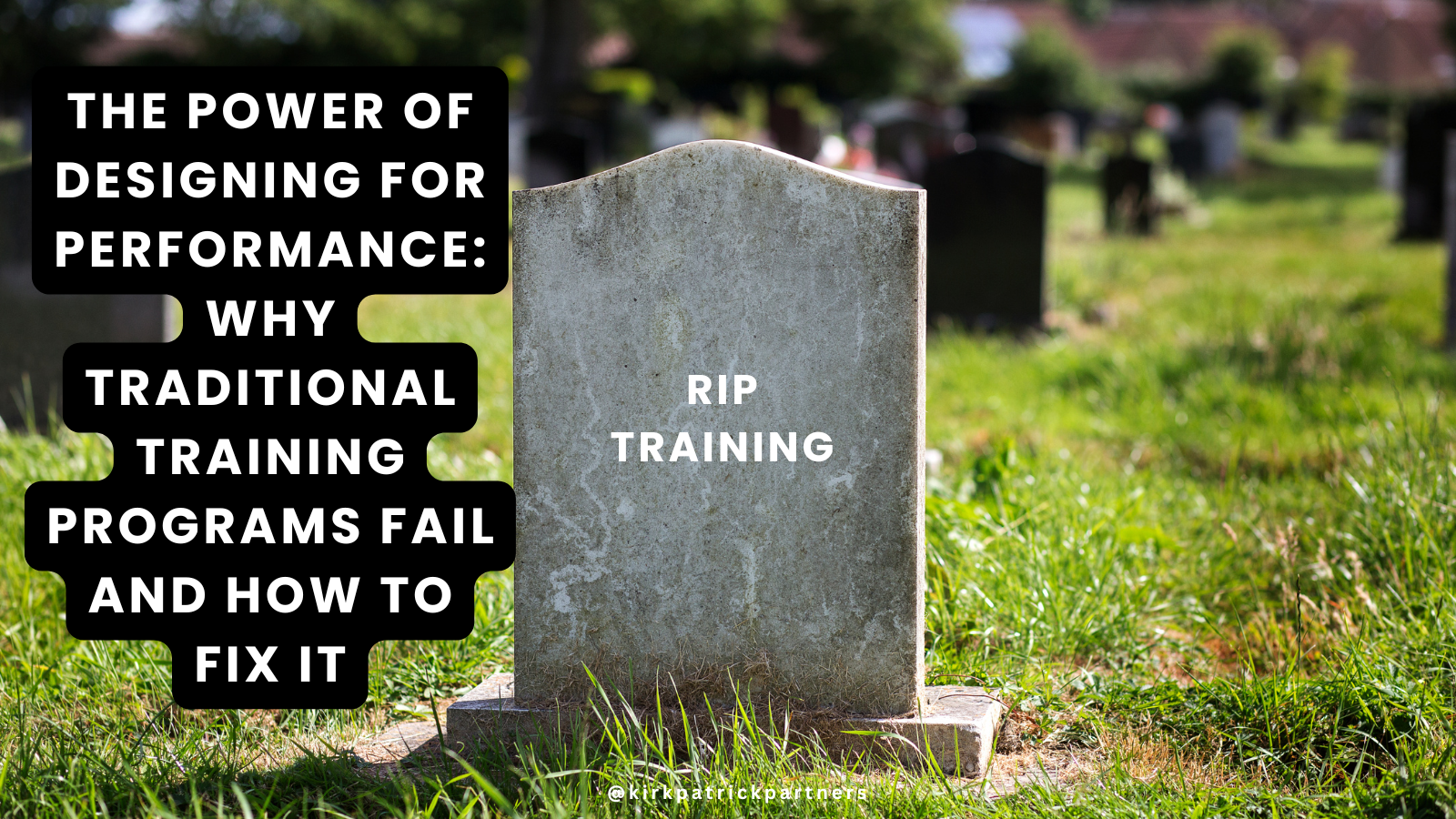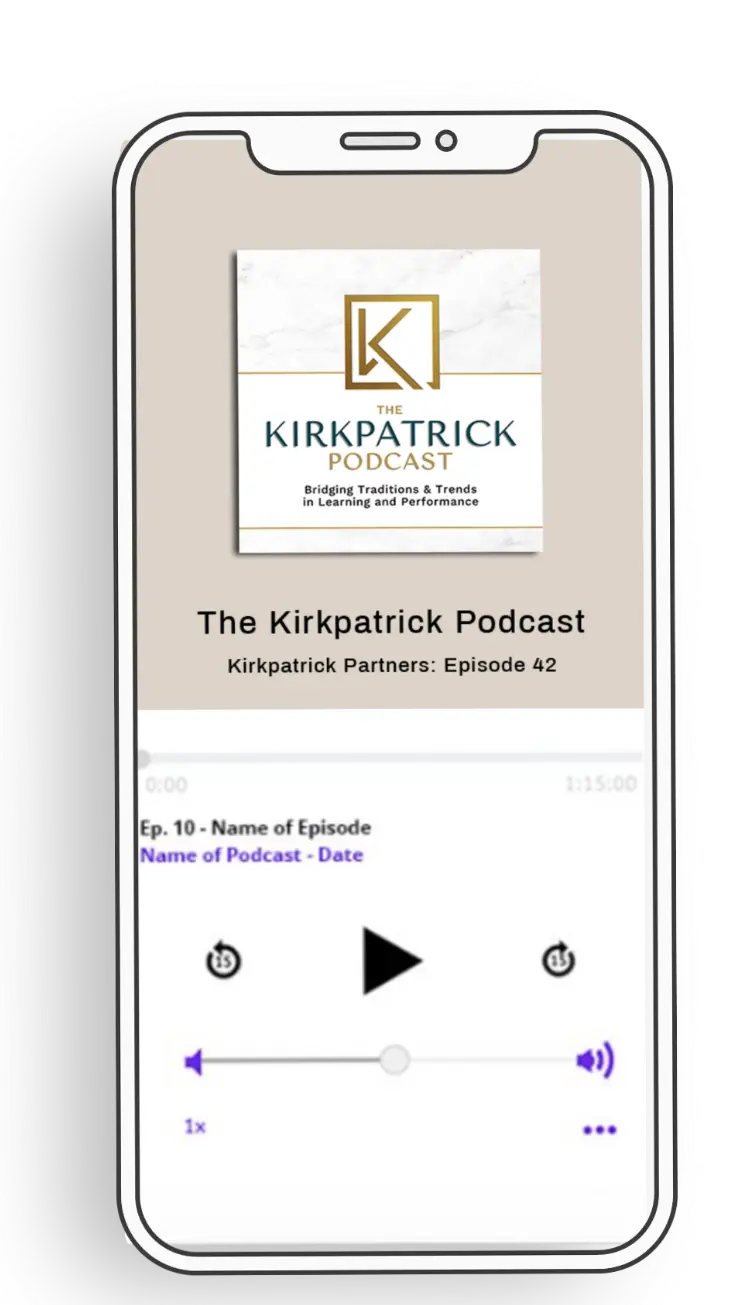The Power of Designing for Performance: Why Traditional Training Programs Fail and How to Fix It

In the world of learning and development (L&D), instructional design is often treated as a linear process—a checklist of deliverables that ends with a training session. But if we want to drive true business impact, this approach falls short.
To elevate training effectiveness, we must shift our thinking. Instead of designing solely for content delivery, we must design for performance outcomes. That means creating learning experiences that translate into real behavior change—and measurable business results.
Why Traditional Learning Design Falls Short
Too often, instructional design focuses on developing content and assumes learners will apply it effectively back on the job. But what happens when the content doesn’t reflect real-world challenges? Or when training is forgotten the moment learners leave the classroom?
Here’s the hard truth: many training programs fail not because of bad content, but because they weren’t built with the end goal—performance—in mind.
Designing for Impact with the Kirkpatrick Model
The Kirkpatrick Model is a globally recognized framework for evaluating training effectiveness. It includes four levels:
-
Level 1: Reaction – How did learners respond to the training? Did they find it relevant to their roles?
-
Level 2: Learning – What knowledge and skills were gained? What is the participants confidence and commitment level post training?
-
Level 3: Behavior – Are those skills being applied on the job?
-
Level 4: Results – What business outcomes were achieved?
What many learning professionals don’t realize is that learning evaluation should begin before training is ever delivered—and continue well beyond the classroom. By integrating this model into the instructional design process, we ensure that learning is purposeful, aligned with performance expectations, and designed to achieve business objectives.
Embedding Evaluation Into the Design Process

With the Kirkpatrick Performance Designer Certification, we teach L&D professionals to infuse evaluation into every step of the design journey. Instead of ending with Level 4, we start there—by clarifying the desired results and working backward to design learning experiences that support those outcomes.
Here are essential questions every performance-minded designer should ask:
-
Why is this training necessary?
-
What performance gap is it intended to close?
-
How does it support our organizational mission and strategy?
-
What behaviors must change for success?
-
What evidence will show the training made an impact?
This approach transforms instructional design from content creation to business problem-solving.
From Content Delivery to Behavior Change
When you design with performance in mind, you’re no longer aiming to “teach” content—you’re planning how learners will transfer knowledge to on-the-job behavior. This requires more than a great course. It involves:
-
Pre-training alignment with stakeholders
-
Clear learning objectives tied to strategic goals
-
Post-training performance support and reinforcement
-
Ongoing measurement and evaluation
Gone are the days of one-and-done training events. Performance-focused learning professionals create end-to-end strategies for driving behavior change and demonstrating training impact.
Saving Programs from the Learning Graveyard
Too many programs end up in the graveyard of good intentions—well-designed on the surface but lacking measurable outcomes. Without clear evaluation metrics, even strong instructional design can fail to demonstrate value.
By focusing on the holistic experience—from initial needs assessment through to long-term impact—you ensure your learning program becomes a driver of success, not another forgotten initiative.
Join the Movement: From Learning to Performance
If you’re ready to design learning that sticks, influences behavior, and delivers results, the Kirkpatrick Performance Designer Certification is your next step.
This program empowers you to:
-
Rethink the role of evaluation in instructional design
-
Align learning with business needs
-
Prove the impact of your work
Don’t just build courses—build solutions that matter.
👉 Sign up for our upcoming cohort and take the first step toward becoming a performance-driven learning professional.
Let’s move beyond learning for learning’s sake—and start designing for real-world results.
Want more? Check out the Kirkpatrick Podcast on your favorite podcast streaming platform for a full episode diving deep into performance design vs. instructional design.
Watch the Show on YouTube!
Want to hire performance designers? Check out the Kirkpatrick Talent Network.





